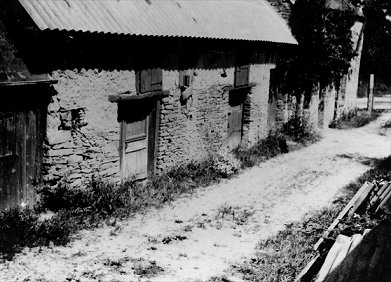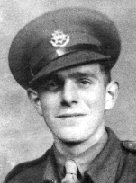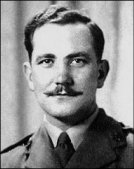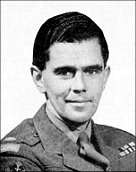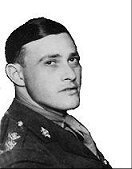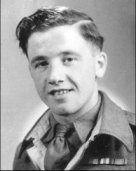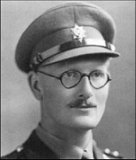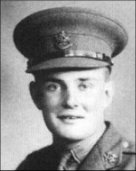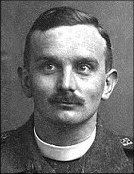Wounded in Action (N.W. Europe 1944-45) - 1st Battalion Worcestershire Regiment
IntroductionBy 1944 medicine had made great advances and this was quickly applied to the battlefield greatly increasing the chances of survival and recovery of those wounded. By the end of 1944 penicillin was readily available to all wounded troops and saved many lives. Also of importance was the supply of fresh batches of blood plasma (blood without red corpuscles) used to replace the fluid part of the blood that seeps away through the walls of the capillaries when a man is wounded. It is interesting to note that statistics showed that some 75% of all wounds were caused by mortar, grenade, aerial bombing or shelling. Only 10% were caused by bullet or anti-tank shell and a further 10% caused by landmines or booby traps. However, if one also takes into account those who later died of their wounds then the figure for gun shot wounds rises to 25%. The body location of injuries showed that the whole body was equally at risk. The effects of explosive shells were fairly random, whilst even small-arms fire relied on indiscriminate saturation rather than marksmanship. |
Military Field Hospital in Normandy |
House used by the 1st Battalion as R.A.P. |
During 1944-45 the 1st Battalion Worcestershire Regiment suffered 52 officers wounded or sick of which 4 died of their wounds or sickness shortly afterwards; 11 of the wounded officers returned to combat after treatment and of these 3 were wounded a second time. Also 2 of the returned officers later died in action. Of the other ranks there were some 700 wounded or sick which included 10 warrant officers (in July 1944 alone there were 133 other ranks wounded). With in the 43rd Wessex Division from 24th June 1944 to 5th May 1945 there were a total number of 481 officers and 7811 other ranks wounded. Dealing with the woundedIn N. W. Europe 1944-45, R.A.M.C. units were present at all levels, every infantry battalion had a Medical Officer (usually with the rank of Captain), a medical orderly, a 15-cwt truck in which to carry their equipment, plus an N.C.O. (Sergeant) and about 20 infantry men, trained as stretcher bearers. All soldiers were trained in simple first aid and the use of morphine, plus they carried a First Field Dressing for immediate use in the field. A first field dressing, a small bandage pack, was carried by all ranks in a special pocket of the right leg of the battle dress trousers. In addition, a shell dressing, which was larger, was usually carried under the camouflage net that covered the steel helmet. Some vehicles also carried a boxed medical kit. |
The wounded were collected by stretcher bearers and taken by jeep or carrier to the Regimental Aid Post (R.A.P.) where the Medical Officer (M.O.) and his orderly would give some immediate treatment. Depending on the severity of the wound, the Field Ambulance Personnel would evacuate the casualties to the Advanced Dressing Station (A.D.S) where they would then be collected by motor ambulance and taken to the Main Dressing Station (M.D.S.). The H.Q. of the Field Ambulance Company formed the Main Dressing Station (M.D.S.), where casualties and their records were taken, anti-tetanus serum is injected and urgent treatment given. After treatment wounded were then transported to a Casualty Clearing Station (C.C.S.). A Walking Wounded Collecting Post (W.W.C.P.), usually set up about 2 to 5 miles from the frontline, to relieve pressure on the A.D.S during battle. Wounded are then collected by lorry and taken to the Casualty Clearing Station (C.C.S.). From the C.C.S. casualties are then transported by Motor Ambulance Convoy (M.A.C.), a Corps Unit, and taken to a General Field Hospital for further treatment or surgical operation. After treatment at the General Field Hospital the wounded were either moved to a Rest Station or a Convalescent Depot before returning to their unit or the more seriously wounded were evacuated back to U.K. by either ship or plane. The rate of survival of the seriously wounded depended on how quickly professional medical treatment was received. In Normandy this was usually just one hour. Equally important were the three medical innovations of the time: penicillin and sulphanilamide (sulpha) to combat infection, and blood transfusion (plasma) to reduce shook.
|
 |

1st Battalion Worcestershire medical jeeps and stretcher bearers (photo I.W.M.)
(Private Bill Edwardes, front left in jeep is seen looking at the camera)
Ahead is an ambulance of 213 Field Ambulance
1st Battalion Worcestershire Regiment Medical Staff
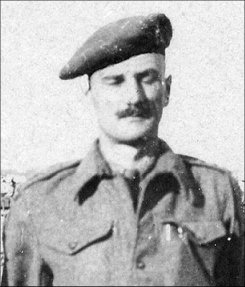 |
 |
 |
Captain R. Duff-Chalmers (R.A.M.C.) |
Sergt. Hodgetts |
Private Bill Edwardes |
The Medical Platoon was organized as part of H.Q. Company and was commanded by Captain R. Duff-Chalmers (R.A.M.C.) with a Medical Sergeant as second-in-command (Sergt. Hodgetts).
The rest of the platoon was made up of stretcher bearers from which 2 were allocated to each company; they operated a rotate so each spent time out of the line at the R.A.P. The total battalion medical platoon strength was about 30 men.
Early in the campaign Sergeant Hodgetts was badly wounded in the leg at Mouen by enemy mortar fire. He was evacuated and later had to have his leg amputated.
On the 9th April 1945, Captain Duff-Chalmers was also wounded in the leg by a splinter due to enemy shelling while he was setting up his R.A.P. in a house in the town square at Haselunne, and was replaced by Captain J. McKendrick (R.A.M.C.).
Bill Edwardes was a young stretcher bearer, not yet 17 when he joined the Battalion. He recalls: “As a 9 stone weakling I found carrying of a stretcher by just two men, extremely difficult, and would stagger round like a drunkard for a few moments, after putting the stretcher down!”
Tales of the Wounded
Below you will find the stories of some of the men of the 1st Battalion Worcestershire Regiment who were wounded in N.W. Europe during WW2.
List of Wounded and Sick Officers (1st Battalion Worcestershire Regiment)
During the N. W. Europe campaign 1944-45 there was a total of 52 officer who were wounded or sick, off these 4 officers were wounded twice. There were 4 officers who later died of their wounds and a further 2 were later killed in action. The names highlighted in RED returned to active service after treatment.
Surname |
Forename/s |
Rank |
Date Wounded |
Type of Wound |
Location |
Allum |
John Patrick |
Lieut. |
19/08/1944 |
Evacuated to hospital |
Berjou |
Badderley |
Kenneth William |
2/Lieut. |
03/08/1944 |
Wounded - evacuated 04/08/1944 |
Cahagnes |
Bagley |
Brian |
2/Lieut. |
12/12/1944 |
Frost bite in foot |
Brunssum |
Bennett |
John M. |
Lieut. |
14/08/1944 |
Stomach wound |
Chateau de Fontaine |
Broome |
William Harry |
A/Major |
29/09/1944 |
88 shell - Died of wounds 30/09/1944 |
Randwijk |
Brown |
R. |
Lieut. |
16/04/1945 |
|
Baumeweg |
Brygider |
Adam |
Lieut. |
29/06/1944 |
Heel blown off |
Mouen |
Clarke |
Bowcher Theodore Senhouse |
Major |
04/11/1944 |
Wounded. |
Mook |
Coulcher |
Frederick Thomas |
A/Capt. |
17/12/1944 (illness) |
Evacuated from Brunssum to Brugge Hospital but died on the 30/12/1944 of Sodium Tellurite poisoning due to hospital error. |
Brugge Hospital |
Crossingham |
Leslie Albert |
2/Lieut. |
17/02/1945 |
Body wound (minor) |
Rosenhof |
Davies |
John Edward Oliver |
Lieut. |
23/09/1944 |
Bayonet wound left knee |
Valburg, Elst |
Duff-Chalmers |
Robert |
Capt. |
09/04/1945 |
Leg wound by shrapnel |
Haselunne |
Durrant |
Leonard Stuart |
Capt. |
30/07/1944 |
Evacuated sick |
La Paumerie |
Eberstadt |
Walter Albert |
Lieut. |
09/08/1944 |
Machine gun wounds |
La Variniere |
Elder |
Bryan Norman Rawnsley |
A/Major |
14/04/1945 |
Right leg wound |
Lethe (Ahlhorn) |
Figures |
Colin Frederick |
Lieut. |
27/02/1945 |
Battle accident |
Louisendorf |
Fiset |
Henri Paul |
Lieut. |
23/07/1944 |
Shrapnel wound |
Hill 112 |
Fiset |
Henri Paul |
Lieut. |
03/09/1944 |
Motor cycle accident (Broken leg) |
Paris (trip to Paris) |
Grubb |
Alfred Albert |
A/Lieut.-Col. |
27/04/1945 |
Arm wound from shrapnel - evacuated |
Bremen |
Gutch |
Archibald John |
T/Major |
29/06/1944 |
Neck wound |
Mouen |
Hall |
Peter Geoffrey |
Lieut. |
28/06/1944 |
Left arm |
Mouen |
Hall |
Peter Geoffrey |
A/Major |
16/04/1945 |
Eye wound |
Baumeweg |
Harrison |
Antony Roy |
Lieut.Col. |
05/08/1944 |
Evacuated sick |
Point 361 |
Henry |
Gilbert Frederick Powlett |
Lieut. |
09/08/1944 |
Machine gun wounds |
La Varinière |
Hill |
Kenneth Alan |
2/Lieut. |
28/03/1945 |
|
Anholt |
Hope-Thomson |
Maxwell Richard Julian |
Lieut.-Col. |
14/04/1945 |
Shrapnel Leg wound - evacuated 22/03/1945 |
Lethe (Ahlhorn) |
Hughes |
Thomas Frederick |
Major |
08/03/1945 |
|
Wardt |
Hulme |
Patrick Ernest |
Lieut. |
28/06/1944 |
Died of wounds |
Cheux |
Humphreys |
Roy |
T/Capt. |
27/12/1944 |
Evacuated |
Bunde |
Hunt |
William G. |
Lieut. |
06/11/1944 |
Died of wounds 07/11/1944 |
Mook |
James |
Henry Herbert Humphrey |
Lieut. |
03/09/1944 |
Battle accident (leg injury due to mortar fire) |
Pressangny L'Orgueilieux |
Jauncey |
Ronald Henry |
Lieut. |
17/03/1945 |
Evacuated |
Afferden |
Jennings |
William Fossett |
2/Lieut. |
27/08/1944 |
|
Vernon |
Kendall |
George Alfred |
Lieut. |
26/06/1944 |
Mounth wound |
Cheux |
Laughton |
Clarence William |
2/Lieut. |
06/07/1944 |
Evacuated to Hospital, died |
Mouen |
Leadbeater |
Walter Lewin |
T/Capt. |
30/11/1944 |
Foot wound |
Rischden |
Martyn |
A. |
Major |
02/08/1944 |
Shrapnel - Admitted to Hospital |
Cahagnes |
Matthews |
Henry Reginald |
A/Major |
16/08/1944 |
Gun shot wound |
Berjou |
Miller |
Roger Arthur William |
T/Capt. |
27/08/1944 |
Machine gun - died of wounds 28/08/1944 |
Route de Tilly (Vernon) |
Morrison |
Howard Stanley Leslie |
A/Capt. |
28/07/1944 |
Evacuated |
Jerusalem |
Newman |
Howard Eric Ronland |
A/Capt. |
09/08/1944 |
Machine gun wounds |
La Variniere |
Osborne-Smith |
Robert Edward |
Lieut.-Col. |
18/11/1944 |
Leg wound |
Rischden |
Ratcliff |
Michael James |
Capt. |
13/07/1944 |
Ankle wound - battle accident |
Chateau de Fontaine |
Reinhold |
Gordon George |
T/Major |
04/05/1945 |
Perforated ear-drum |
Westertimke |
Rice |
Ralph Frederick George |
Lieut. |
16/08/1944 |
Hit by flying stone (due to land mine) |
Berjou |
Richards |
Nicholas Trevor |
Lieut. |
29/06/1944 |
Shrapnel wound |
Mouen |
Richards |
Nicholas Trevor |
Lieut. |
29/12/1944 |
Wounded in the foot |
Bunde |
Roose |
Peter FitzR. R. |
A/Major |
14/07/1944 |
Knee wound |
Chateau de Fontaine |
Souper |
Mowbray Souper |
A/Major |
19/08/1944 |
Evacuated sick to R.A.P. |
Berjou |
Speirs |
William |
Capt. |
16/02/1945 |
Evacuated (knee injury) |
Bedburg |
Tinkler |
Edgar |
Capt. |
16/07/1944 |
Physical exhaustion. Evacuated |
Bas de Mouen |
Trimnell |
Frederick Stanthorpe |
Lieut. |
27/08/1944 |
Hit by machine gun |
Vernon |
Tromans |
Leslie Attwood |
2/Lieut. |
23/07/1944 |
|
Baron (Hill 112) |
Vickers |
Arthur William Neville Langston |
Lieut.-Col. |
07/02/1945 |
Admitted to Hospital |
Geldrop |
Wade |
Frederick Peter |
Lieut. |
22/11/1944 |
Shrapnel in the arm – evacuated 24/11/1944 |
Rischden |
Wade |
Frederick Peter |
Lieut. |
27/03/1945 |
Bullet in the thigh (Spandau) |
Vehlingen (Autobahn) |


